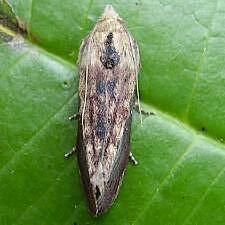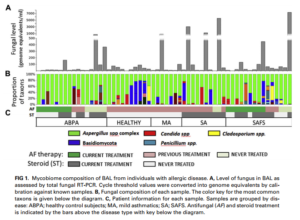Submitted by Aspergillus Administrator on 24 February 2009

People suffering from an aspergillosis infection are treated with drugs designed to stop or kill the invading fungus i.e. antifungal drugs. If the drug stops growth of the fungus but does not eradicate the infection completely (which is what most current antifungal drugs do to Aspergillus) then conditions favour the development of resistance to that drug. Unfortunately there are signs of resistance to the antifungal drugs developing, so alternative antifungal drugs are sometimes needed but of course ultimately resistance could develop to those as well – a different approach is needed.
Researchers in this recent paper have been working on the possibility of finding new targets for attacking the fungus and have described one hopeful candidate – the heat shock protein (hsp), a family of proteins found in most living things. This protein is thought to be involved in how a fungus fights off the stress of attack by an antifungal drug, so if it can be stopped from working then the fungus should be less able to fight off attack. In the study they used inhibitors of hsp90 in combination with antifungals to test if an Aspergillus infection can be completely removed. Antifungal or heat shock protein inhibitor on their own failed to prevent death of the moth larvae, but when used together they had 100% success, which is very good news!
In the words of the author
“Harnessing Hsp90 provides a much-needed strategy for improving the treatment of fungal disease because it enhances the efficacy of existing antifungals, blocks the emergence of drug resistance, and exerts broad- spectrum activity against diverse fungal pathogens.”
Unfortunately there is a snag – the heat shock protein inhibitors currently in use will also inhibit human and mouse heat shock proteins, therefore they are toxic for use in either mouse or human. The experiments described above used an insect model (greater wax moth (Galleria mellonella) larvae) to demonstrate the principle as the hsp inhibitors used were not toxic to the moth – presumably because moth hsp90 is different enough from fungal hsp90 to avoid being inhibited!
Further progress requires the development of heat shock protein inhibitors that are specific enough to ignore human heat shock proteins while attacking fungal heat shock proteins. A large grant has been awarded to the researchers to do exactly that.
News archives
-
Title
Date









